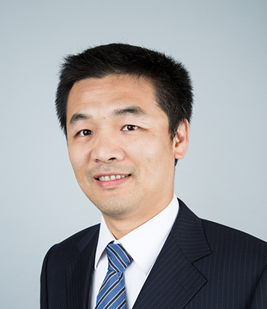报告题目:Plasmonic Structures and Applications Fabricated Using Collapsible Nano-Fingers
报告人:Prof. Wei Wu
报告时间:10:30—11:30
报告地点:教师活动中心
讲座主题:Plasmonic Structures and Applications Fabricated Using Collapsible Nano-Fingers
讲座时间:2019年12月16日,上午10:30-11:30
讲座地点:浙江工业大学屏峰校区 教师活动中心 (理A-理B二楼会议室)
主讲人:Prof. Wei Wu, Dept. of Electrical Engineering, University of Southern California, Los Angeles, CA 90089
Abstract
Plasmonic nanostructures are of great interests recently due to their ability to concentrate light to small volume. They have many potential applications in optical communication, disease diagnosis, and chemical sensing. Therefore it is extremely important to investigate the plasmonic hot spots both theoretically and experimentally. While it is theoretically predicted that the optimal hot spot is a sub-nm gap between two metallic particles, due to the difficulties in fabrication of sub-nm structures, most of the studies on hot spot behaviors at that scale are either theoretical only or based on collective behaviors of multiple hot spots (i.e. dense-packed nano-particles separated by spacers) which do not necessarily behave the same as each individual hot spot. Therefore, it is essential to find a way to fabricate hot spots with sub-nm gap sizes deterministically and reliably as the experimental platform to probe and utilize those hot spots. We invented a technology to fabricate large-area gapped plasmonic structures deterministically with atomic precision, high throughput and high reliability at low cost. The technology is based on collapsible nano-fingers fabricated using nanoimprint lithography and ALD. Several applications have been realized based on this technology. For example, we studied the quantum phenomena in the gap plasmon. Moreover, we also demonstrated label-free single molecule sensing with surface-enhanced Raman spectroscope (SERS), studied the plasmonic-enhanced molecular fluorescence, and achieved plasmonic-enhance photocatalysis using devices fabricated by this technology.
Biography

Dr. Wei Wu is an associate Professor at the Ming Hsieh Department of Electrical Engineering, University of Southern California. He graduated from Peking University with a BS in Physics in 1996, and received a Ph.D. in Electrical Engineering from Princeton University in 2003. He joined USC in 2012. Before joining USC, he had worked as research associate, scientist and senior scientist at HP labs. He is an expert on nanofabrication and applications. His work includes nanoimprint lithography and applications in nano-electronics, nano-photonics, plasmonics, chemical sensing and nano-electrochemical cells. He coauthored 105 peer reviewed journal papers, 2 book chapters and more than 100 conference presentations, including 16 keynote and invited presentations. He has 115 issued U.S. patents. The nanoimprint machine that he invented has been successfully commercialized by EZImprinting Inc. He is the chair of Nanofabrication track, IEEE Nanotechnology Council. He is a co-editor of Applied Physics A and an associate editor of IEEE Transactions on Nanotechnology. He was also an IEEE Nanotechnology Council 2015 and 2016 distinguished lecturer.

